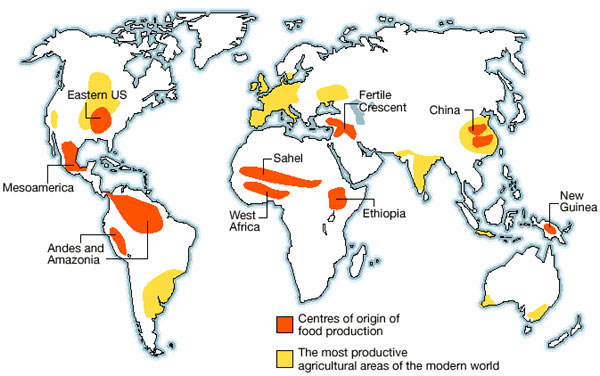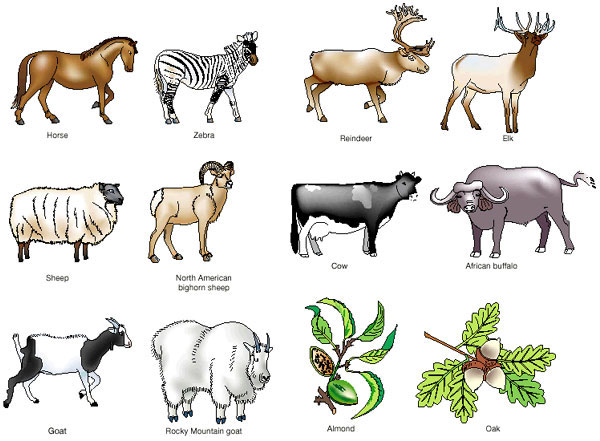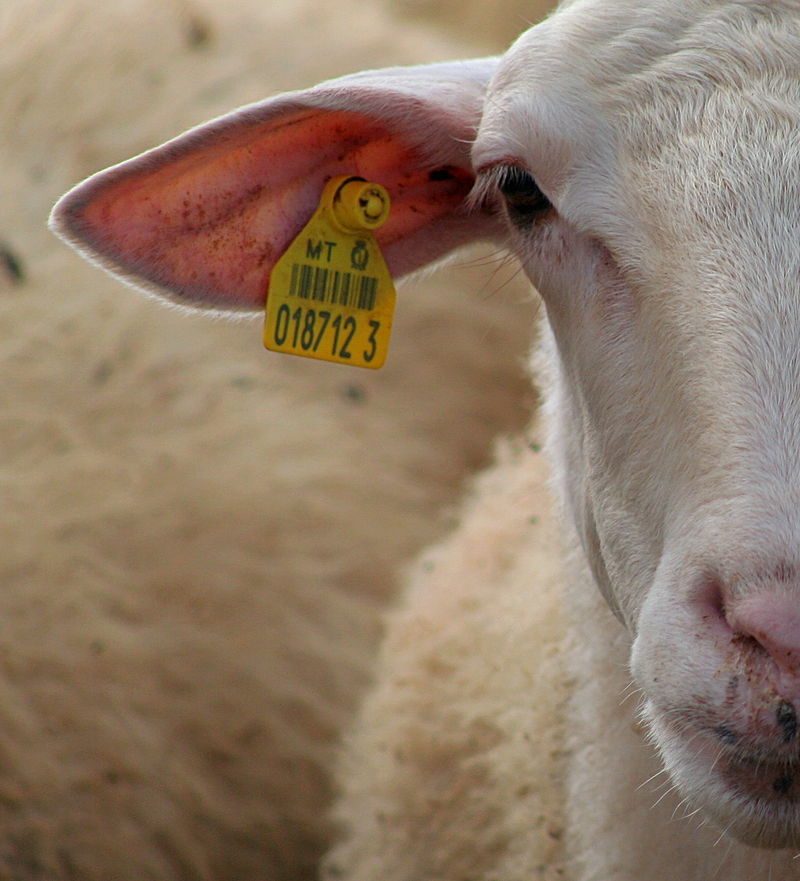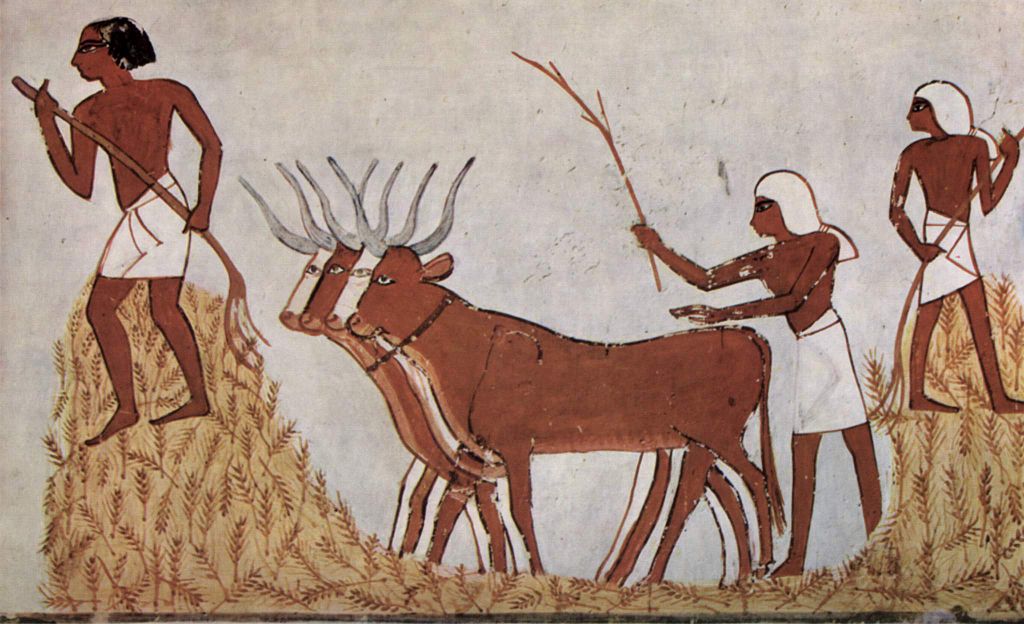Before the advent of the domestication of plants, man led a carefree existence. They roamed in groups from location to location in search of food. If food was readily available in an area, they might settle for a while but, being itinerants, they carried little. Furthermore, they sought shelter rather than built shelter.
What happened when they elected to settle permanently in an area and to domesticate plants and animals? Will another orthodoxy be overthrown in this debate?
Main picture: The false idyll of domestication
Multiple beginnings
In the past half century, anthropologists have substantially revised their narrative on the beginnings of man as a “domesticated animal.” In doing so, they have overthrown the previous orthodoxy in numerous ways only to heartily embrace a new one.
The first aspect of the dogma to be discarded, was the central location hypothesis. In terms of this tenet, the genesis of agriculture was the Fertile Crescent in the Middle East. From there agriculture spread out across the globe. Scientists did not heed the signs. Firstly, there were inchoate farming settlements elsewhere in the world but a more vexing question related to South America. How had these civilisations invented farming not once in one location but in various discrete locations?

Ancient and modern centres of agriculture
One of the earliest attempts to reconcile the central location and the dispersed locations conundrum, was to postulate that sailors from the Fertile Crescent had sailed in reed-type rafts across the vast expanse of the Atlantic Ocean bearing plans for pyramids and crops to grow. Derailing these facile theories was the fact that the domesticated plants and animals in South America diverged from those in the Middle East: potatoes and lamas versus sheep, goats and wheat.
Perhaps wilfully overlooked in this battle of a Middle Eastern primacy, were other locations where domestication had occurred – West Africa, China and Indonesia.
By placing the tribes of the Middle East on a pedestal for their discovery, anthropologists had ignored the fitful rhythms of development as it was not readily apparent to a biased observer.
Number of plants and animals domesticated
Courtesy of a seminal book entitled Guns, Germs and Steel by Jared Diamond I was disabused of numerous invalid suppositions in this regard. The first revelation was that the number of animals and plants domesticated since the commencement of the process of domestication is no more than a dozen. As regards animals, only sheep, cattle, goats, pigs and chickens have been domesticated whereas as regards plants, only wheat, millet, sorgum, rice and maize (corn to Americans) have been domesticated. What is even more of an eye-opener, is that these few plants comprise 80% of all plant based matter consumed.

Comparisons of domesticated wild species (left of each pair) and their never-domesticated close relatives (right) reveal the subtle factors that can derail domestication
As Diamond points out in his book, the saga of domestication had less to do with the romantic notions of certain clever tribes but rather the local availability of suitable raw material. When Diamond suggested that much of history of domestication is thus based upon happenstance and not superior intellect, he faced a welter of criticism. Just read the reviews of this book on Amazon to understand the depth of the angst that this theory has ignited.
On whom was advantage bestowed?
In his seminal book Sapiens: A Brief History of Humankind Yuval Harari ratchets Diamonds argument up one further gear.
Picture this – Harari muses aloud. How was the life of the novice pioneer farmer transformed? He never realised a priori how hard a taskmaster wheat was. It only prospered when it was pampered otherwise it either whithered and died or it refused to produce an ample “crop.” It disdained having weeds as neighbours in close proximity, so the farmer had to learn how to weed. The roots of the wheat required a regular drink of water. So, the farmer learnt how to build irrigation channels. In order to produce sufficient wholesome wheat, it demanded nourishment. This the farmer dutifully provided by scooped up the sheep poop in the fields. After all this work, if he did not install some form of fencing in the form of thorn covered branches, all his hard work be destroyed by his domesticated goats and sheep.

Sheep with an ear tag that is part of a national livestock identification system
Instead of spending a few hours foraging for sustenance every day, the ex-forager and recently appointed farmer had supplanted an indolent lifestyle with one of continual work. From early in the morning until dusk, the farmer had chores to do.
Did the end justify the means?
Certainly not.
After a decade, the farmer started experiencing back pain from the continual bending. While he might now possess an abundance of wheat and never ever had to feel the pangs of hunger again, the monotonous diet comprising wheat all day & every day and the lack of a varied diet of fruit and nuts had drained his body of nutrients.
The consequence
For the people, settlements and towns were now possible. A foraging lifestyle did not allow for dense populations but civilisation had come at a cost.

Farmers with wheat and cattle – Ancient Egyptian art 1,422 BCE
Its two profound influences were the creation of bureaucracies – ruling classes, theologians, lawyers et al but at the cost of the health of the community due to overwork and disease due to unhealthy diets.
In doing so, man created an enduring myth that they domesticated plants and animals. Given the details supplied above, it is obvious that this is a fallacy.
Indeed, it is in hindsight abundantly clear that agriculture domesticated man.
Sources:
Guns, Germs and Steel by Jared Diamond
Sapiens: A Brief History of Humankind by Yuval Noah Harari


1 Comment